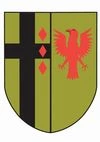Westereiden
In the first centuries of their existence, the neighboring village settlements Westereiden and Oestereiden were called "Eden" or "Eyden" in the oldest written documents of the archbishops of Cologne. In 1256 a distinction was made for the first time between Eyden okzidentalis (= western Eyden) and Eyden orientalis (= eastern Eyden). The biggest landlords in Eden were, besides the noble family of Lüerwalt, the lords of Langenstraße, but the most important feudal lords were the noble lords of Büren, from which many disputes about the place developed. In 1472 the extinct nobles of Langenstraße were followed by the counts of Rietberg as landowners. The monasteries of Oelinghausen and St. Walburgis-Soest also owned land in the village and fields of Westereiden. Important for the development of Westereiden was the local quarrying of natural stone, which began around 1800 and at times was carried out in 5 quarries.
Ecclesiastically, the village always belonged to the parish of Hoinkhausen, whereby the oldest chapel, which stood on the former main farm (Rüther estate), was first mentioned in 1597. In 1882 a new chapel building in neo-Gothic style was erected nearby, which, like its predecessor, was dedicated to St. George.
The local coat of arms shows the cross of the Electorate of Cologne, the lozenges of the Knights of Lüerwalt and the Rietberg eagle.
Information on the Westereiden network workshop can be found at: https://netzwerkstatt-westereiden.de/
